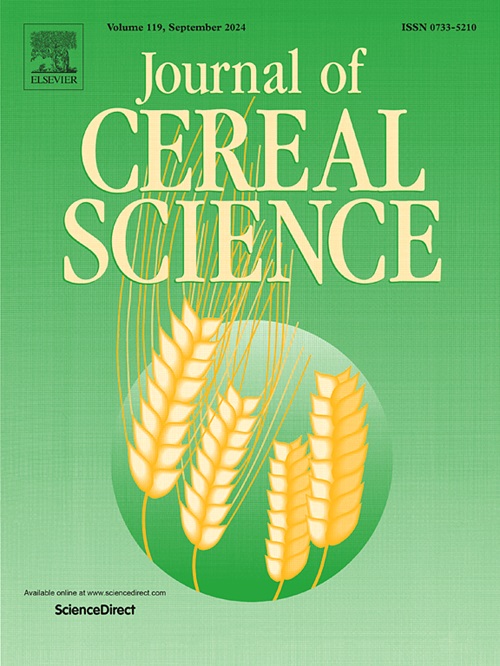Microstructural evolution of wheat kernels during germination: a multi-scale approach
IF 3.7
2区 农林科学
Q2 FOOD SCIENCE & TECHNOLOGY
引用次数: 0
Abstract
Wheat is one of the most extensively cultivated cereals, with its pre-harvest quality being critical for subsequent food production. In-field sprouting, triggered by sudden climatic changes, alpha-amylase levels in wheat rise, negatively impacting its quality. This study aims to examine germination progression at the microstructural level. Canadian Western Red Spring (CWRS) wheat was germinated under controlled germination conditions for 6, 12, 18, 24, and 36 h. Alpha-amylase activity, the Falling Number, bulk density, starch crystallinity and microstructural analysis by X-ray micro-computed tomography (micro-CT) and scanning electron microscopy (SEM) were measured. The decline in the Falling Number and the rise in alpha-amylase activity confirmed the progress of germination. Bulk density significantly (p < 0.05) decreased in the germinated kernels, whereas porosity significantly (p < 0.05) increased after 24-h germination. X-ray micro-CT and SEM images showed considerable structural changes at 36 h of germination. Although no significant differences in the cross-sectional area were observed across the kernels as germination progressed, pores were detected in the kernel crease after 36 h. Likewise, the 36-h germinated sample showed a significantly thicker outer layer in the apical region of the kernel, likely due to the detachment of the outer layer. Notable changes in starch and protein structures were observed after 18 h, while starch crystallinity increased throughout germination. Overall, the results indicate that germination-induced alpha-amylase activity significantly impacts the microstructure of wheat kernels, particularly by increasing the outer layer thickness at the apical part of the kernel.

发芽过程中小麦籽粒微观结构的演变:一种多尺度方法
小麦是最广泛种植的谷物之一,其收获前的质量对后续的粮食生产至关重要。在田间发芽时,由于气候突变,小麦中的α-淀粉酶水平会升高,从而对小麦的品质产生负面影响。本研究旨在从微观结构层面研究发芽过程。在受控发芽条件下,对加拿大西部红春(CWRS)小麦分别发芽 6、12、18、24 和 36 小时,测量α-淀粉酶活性、降落数值、容重、淀粉结晶度,并通过 X 射线显微计算机断层扫描(micro-CT)和扫描电子显微镜(SEM)进行微观结构分析。降落数值的下降和α-淀粉酶活性的上升证实了发芽的进展。发芽 24 小时后,发芽果仁的体积密度明显降低(p < 0.05),而孔隙率则明显增加(p < 0.05)。X 射线显微 CT 和扫描电子显微镜图像显示,发芽 36 小时后,核仁的结构发生了很大变化。同样,发芽 36 小时的样本显示,核仁顶端区域的外层明显变厚,这可能是由于外层脱落造成的。淀粉和蛋白质结构在 18 小时后发生了显著变化,而淀粉结晶度在整个发芽过程中都在增加。总之,研究结果表明,发芽诱导的α-淀粉酶活性对小麦籽粒的微观结构有显著影响,特别是通过增加籽粒顶端部分的外层厚度。
本文章由计算机程序翻译,如有差异,请以英文原文为准。
求助全文
约1分钟内获得全文
求助全文
来源期刊

Journal of Cereal Science
工程技术-食品科技
CiteScore
7.80
自引率
2.60%
发文量
163
审稿时长
38 days
期刊介绍:
The Journal of Cereal Science was established in 1983 to provide an International forum for the publication of original research papers of high standing covering all aspects of cereal science related to the functional and nutritional quality of cereal grains (true cereals - members of the Poaceae family and starchy pseudocereals - members of the Amaranthaceae, Chenopodiaceae and Polygonaceae families) and their products, in relation to the cereals used. The journal also publishes concise and critical review articles appraising the status and future directions of specific areas of cereal science and short communications that present news of important advances in research. The journal aims at topicality and at providing comprehensive coverage of progress in the field.
 求助内容:
求助内容: 应助结果提醒方式:
应助结果提醒方式:


